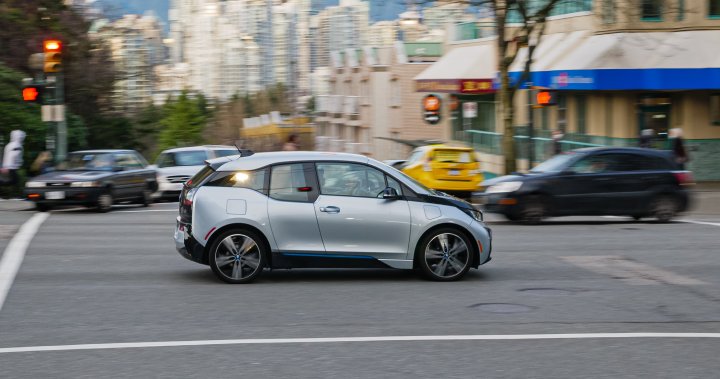
How electric vehicles could spell death for the oldest form of radio broadcasting
Global News
Your next car could very well be a full-on electric vehicle. But will it come with an AM radio? The future is looking increasingly dodgy for that kind of listening.
My neighbourhood is lousy with electric vehicles: all flavours of Teslas, scattered Volts and Bolts, a selection of Hyundais and KIAs, a couple of Nissan Leafs (Leaves?) along with some Taycans, at two Polestars that I’ve seen, and at least one Lucid. They’re all loaded with so much fabulous spaceship tech that the mind boggles at what our driving experiences will be in the next 10 years.
However, one piece of tech is missing from many of them: a good old-fashioned AM radio, a feature that goes back almost a hundred years.
As far as people can tell, Kelley’s Motors in New South Wales, Australia, was the first to jam a new-fangled aftermarket radio into a car back in 1924. But it was the Galvin brothers and their new company, Motorola, that created the ancestor of all car infotainment units when they fitted a six vacuum-tube AM radio in a Ford Model A in June 1930. They overcame plenty of engineering problems, including where to put the giant high-voltage batteries (under the passenger seat), how to house the six vacuum tubes (in a big wooden case), placement of the antenna (on the roof), and most importantly, how to eliminate static caused by the electrical activity of the engine.
AM signals are easily disrupted by electrical activity. Overhead powerlines, lightning, external electric motors, and even the running of an automobile engine are enough to cause crashing static, buzzing, and fade-outs. The Galvins’ solution was to fit the spark plugs of their Model A with a “suppressor” so that the firing sequence of the cylinders no longer interfered with the radio. Tuning the engine down like this actually hurt performance, but at least motorists got to listen to programming that was relatively static-free.
Eventually, the Galvins figured out other ways around the static problem, and suppressors were eliminated. But environmental electrical interference remained, and this spurred the development of static-free FM radio. (That’s another story entirely.)
Ninety years later, the AM static problem is back. And it’s bad.
Today’s electric vehicles are powered by motors that generate electromagnetic fields that happen to operate in the same frequencies as AM radio signals. The result is a war between these wavelengths. The more powerful these motors get, the more adept they are at cancelling out AM signals. It’s can make for annoying listening. Other bits of tech, including speed controllers and some of the other electron-power magic inside these cars, also cause havoc with frequencies between 530 and 1700 kHz, which is where AM radio lives.
While there are EVs that offer AM radio as part of their infotainment systems, owners are warned upfront by the manufacturer about the same kind of static, buzzing, distortion, and fade-out issues the Galvin brothers struggled with back in 1930.

 Run 3 Space | Play Space Running Game
Run 3 Space | Play Space Running Game Traffic Jam 3D | Online Racing Game
Traffic Jam 3D | Online Racing Game Duck Hunt | Play Old Classic Game
Duck Hunt | Play Old Classic Game